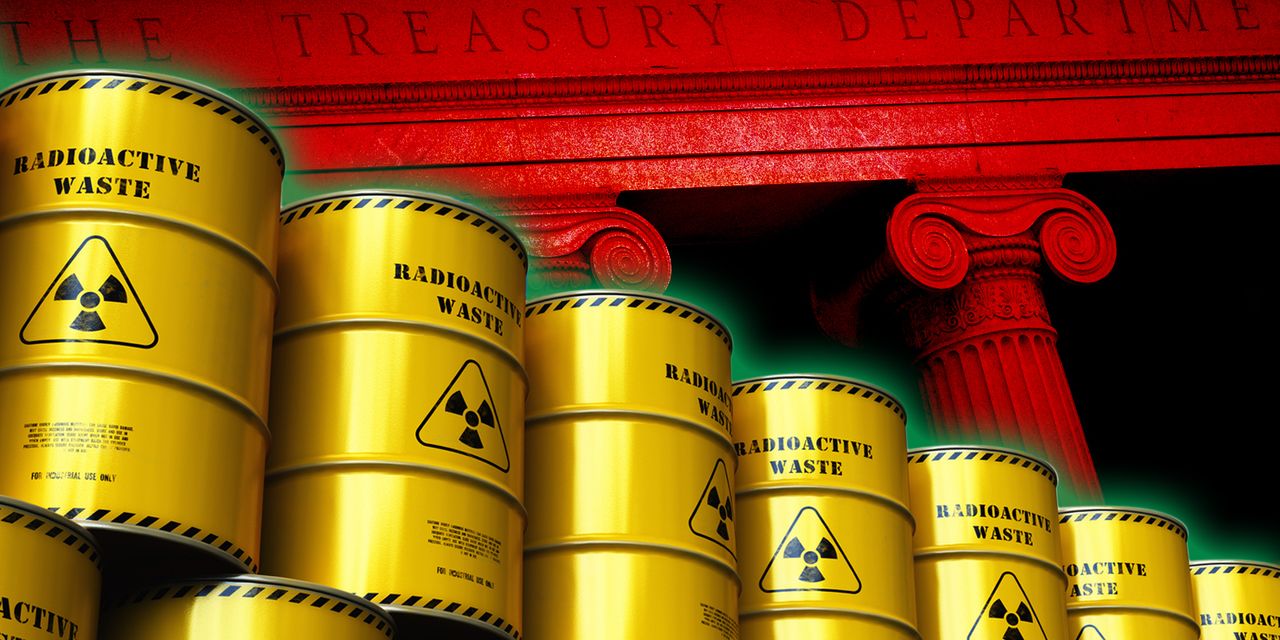
Market Extra: Government bonds held at banks may be so-called ‘toxic asset’ of next financial crisis, fund manager says
Contagion fears triggered by the speedy collapse of two regional banks in less than a week is raising the risk of a crisis in confidence in U.S. banks, one in which government bonds would be the “toxic asset” at the center of it all.That’s one of two scenarios being entertained by European global investment manager Eric Sturdza Investments, which managed $1.3 billion across eight funds as of January. Under a best-case scenario, investors’ fears would be calmed as California’s Silicon Valley Bank and Signature Bank in New York are reorganized “in an orderly fashion,” according to Chris Crawford, the Boston-based portfolio manager of the firm’s Strategic Long Short Fund. The flip-side scenario is that the U.S. government’s weekend efforts to ensure that the banks’ depositors are made whole may erode confidence even further, with consumers starting to fear for the safety of their deposits, he said.Financial-stability concerns are running up against the Federal Reserve’s need to keeping hiking interest rates, particularly with inflation still running strong as reflected in Tuesday’s CPI report for February. With investors continuing to assess the risks of further fallout from the banks’ collapse — a consequence of the Federal Reserve’s yearlong rate-hike campaign —analysts like Vicky Redwood, a senior economic adviser for Capital Economics, point to some possibility that the start of the next financial crisis could already be under way.At the core of the banking sector’s problems is a mismatch between assets and liabilities, which was blamed for Silicon Valley Bank’s failure but isn’t likely to be contained to just a small circle of banks. Deposit growth has outstripped bank lending over the past few years, forcing banks to place more capital in the perceived safety of medium and long-duration Treasurys, without realizing higher inflation and interest rates would one day erode the value of those bonds. Even if banks could avoid marking down the value of their balance sheets or have sufficient capital to absorb write-downs, contagion fears could lead to “self-fulfilling action” that prompts customers to pull more of their deposits, according to Crawford. The fund manager couldn’t immediately be reached for further comment.“It is rather notable that toxic loans (e.g. NINJA loans) were the problem in the GFC [2007-2008 Great Financial Crisis], whereas the ‘toxic’ asset in the [next] crisis would be government bonds!” Crawford wrote in a note on Tuesday. In a scenario in which trust in banks is broken, “ever greater government measures (and funding) will be required to backstop more individual banks and/or provide much larger general platforms to backstop all banks,” Crawford said. Mass-scale intervention “could imply massive creation of new money which is inflationary, but it could also spark a severe recession via a collapse in consumer confidence and hiring, which is deflationary.” The Fed’s interest-rate policy might be impacted “with less inclination to raise rates in a skittish environment, which could actually favor riskier assets and the hyper-growth/leveraged equities that have underperformed so severely in the past few quarters… It is also conceivable that inflation could continue to be a problem even with a weakening economy or recession,” producing an environment of stagflation, Crawford said. Banks are one of the most prominent players in the financial market with a need to put capital in a safe place. That’s because they generally lend over the longer term, while relying on deposits that can theoretically be withdrawn in a single day — creating a “duration mismatch,” according to Chris Low, chief economist at FHN Financial in New York. This mismatch becomes a problem when the bank is holding longer-term Treasurys and needs to sell them at a loss, well before maturity.Absent the banking-sector’s woes, Tuesday’s CPI data should have left the Federal Reserve on a path of hiking rates again next week by a half-percentage point, according to Neil Dutta of Renaissance Macro Research. Instead, fed-funds futures traders were factoring in a 77.5% chance of a quarter-point hike that would take the Fed’s main benchmark rate target to between 4.75% and 5% on March 22. Meanwhile, Treasury yields spiked across the board on Tuesday, handing the policy-sensitive 2-year rate BX:TMUBMUSD02Y its biggest one-day jump since Feb. 3. All three major U.S. stock indexes DJIASPXCOMP finished higher, as investors focused on the brighter side of the CPI report, which matched estimates. Shares of regional banks rebounded.On Monday, Colorado-based portfolio manager Brian Mulberry of Zacks Investment Management, which manages $15 billion in assets, said that the common thread facing most, if not all, U.S. banks centers on the way they may have managed interest-rate risks, leaving them in trouble “should a large-scale run develop.”
Market Pulse Stories are Rapid-fire, short news bursts on stocks and markets as they move. Visit MarketWatch.com for more information on this news.


